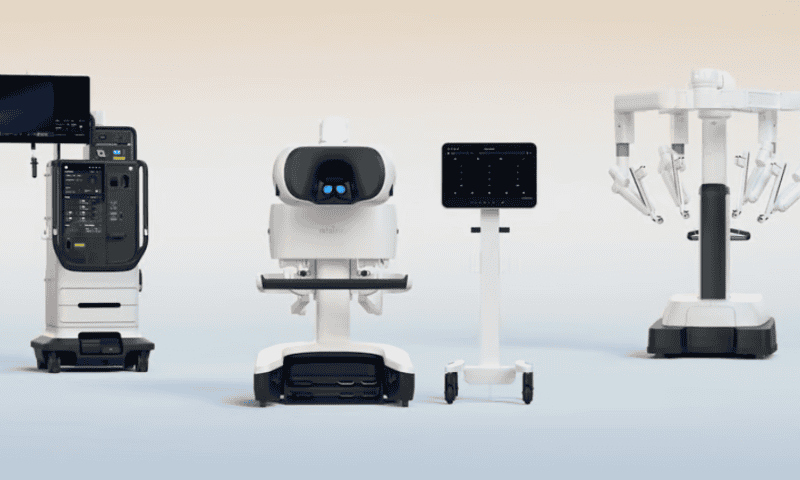Intuitive Surgical has received an FDA green light for the fifth generation of its multiport da Vinci robot, following more than a decade of research and development.
The company said the da Vinci 5 system adds more than 150 upgrades over its predecessor, the da Vinci Xi, which received its agency green light in 2016. That includes new controllers for surgeons that offer force feedback, designed to mimic the feel of handheld tools during a procedure.
According to Intuitive, the use of mechanical feedback led to 43% less force being exerted on tissue in preclinical trials. The company said this new stream of measurable data could one day support artificial intelligence-based analyses that account for patient outcomes, aimed at improving surgical precision and avoiding unnecessary trauma.
The da Vinci 5’s optional feedback-equipped instruments have been cleared for the same procedures as the da Vinci Xi, save for pediatric and cardiac indications; there is also a specific contraindication barring the use of the needle driver in suturing during hysterectomies and the removal of uterine fibroids.
The da Vinci 5 also includes integrated insufflation and electrosurgical units, and comes equipped with computing power 10,000 times greater than the previous generation, the company said.
“We intend to launch da Vinci 5 more broadly in the U.S. and globally after we learn from and work with an initial smaller number of customers directly,” said Intuitive’s chief medical officer, Myriam Curet, with the first users including health systems with “mature robotic surgery programs” that also worked with the company during the machine’s development.
Earlier this year Intuitive earned a CE mark approval in Europe for its single-port da Vinci SP system. On the continent, the robot is cleared for a range of surgeries, including endoscopic abdominal and pelvic procedures, as well as chest, throat, breast and colorectal indications.
The company said in January that it is working on obtaining additional FDA clearances—to expand beyond urology and transoral procedures into lower gastrointestinal and thoracic indications—and is also seeking its regulatory approval in China.

